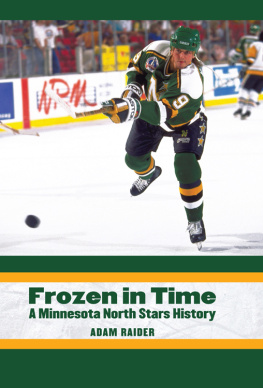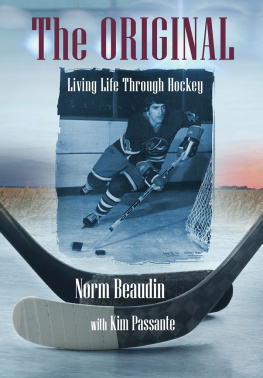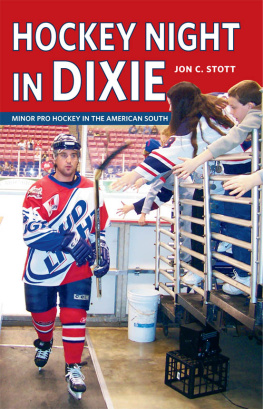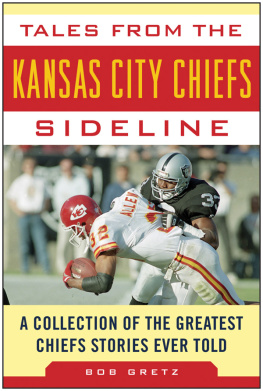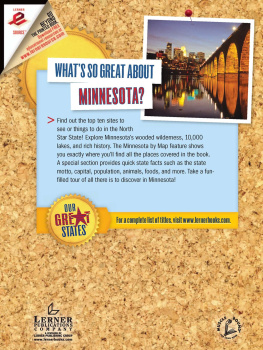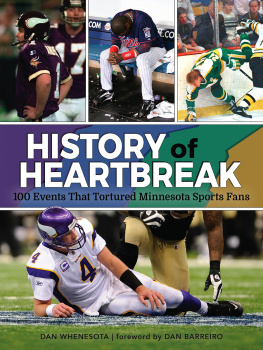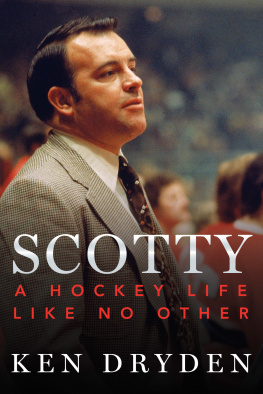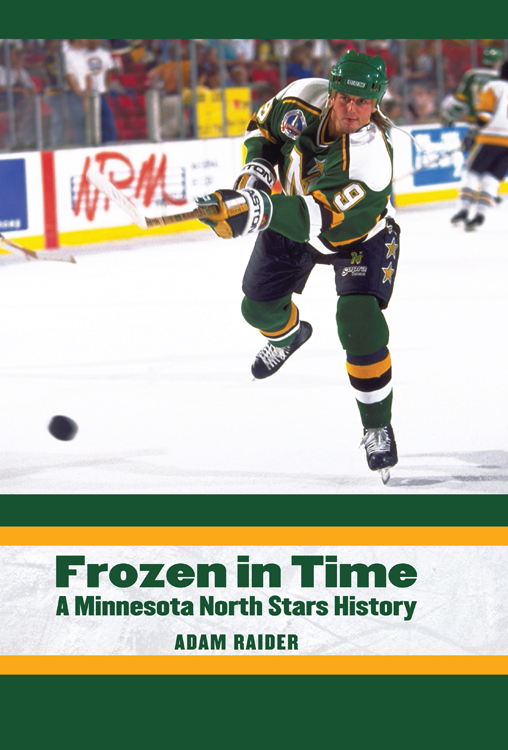
Adam Raider has captured the excitement of the game in his expertly researched and wonderfully written chronicle of the Minnesota North Stars, Frozen in Time . I very much enjoyed every page of this excellent hockey history lesson.
Kevin Shea, author of Barilko: Without a Trace
Frozen in Time
Frozen in Time
A Minnesota North Stars History
Adam Raider
University of Nebraska Press | Lincoln and London
2014 by Adam Raider. All rights reserved.
Cover photo Paul Bereswill/Hockey Hall of Fame.
Ice texture iStockphoto.com /letty17.
Author photo by Mario Morgado.
Library of Congress Cataloging-in-Publication Data
Raider, Adam.
Frozen in time: a Minnesota North Stars history / Adam Raider.
pages cm
Includes bibliographical references.
ISBN 978-0-8032-4998-1 (hardcover: alk. paper) ISBN 978-0-8032-8639-9 (epub) ISBN 978-0-8032-8640-5 (mobi) ISBN 978-0-8032-8641-2 (pdf) 1. Minnesota North Stars (Hockey team)History. I. Title.
GV 848. M 56 R 35 2014
796.962'6409776579dc23
2014020827
The publisher does not have any control over and does not assume any responsibility for author or third-party websites or their content.
For Amy, the best linemate a guy could have.
And for Evelyn, future captain of the U.S. Olympic Hockey Team.
Contents
In 2010 a friend gave me his extra ticket to the Winter Classic at Fenway Park. The Boston Bruins were hosting the Philadelphia Flyers, but I didnt much care who was playing. To me the Winter Classic is a celebration of hockey that transcends team affiliation. Thats why, in a stadium of thirty-eight thousand spectators, I was one of the few not wearing any Bruins or Flyers paraphernalia. Instead I wore a vintage Dave Gagner North Stars jersey. Its green and gold and bright enough to burn your retinas. All skiers and mountain climbers should wear North Stars jerseys so they can be found by rescue teams after avalanches.
I had just passed through the turnstiles on Yawkey Way when I heard someone call out in a Boston accent as thick as the sludge at the bottom of the Charles River, NAWTH STAAHHS !
I turned to see a Bruins fan walking in my direction and smiling from ear to ear.
Awesome jersey, bro!
And it was like that all afternoon. People actually stopped to take my picture. I felt like a celebrity, but without the entourage, Botox forehead, or disposable income. The pure, almost childlike joy that this jersey inspired in others reminded me that hockey fans, perhaps more than fans of any other sport, have a wonderful appreciation for the history of the game.
Im honored that youve chosen to join me on this journey into hockeys colorful past and pleased that I finally have an opportunity (in print!) to thank everyone who helped make it possible.
Ill start with Rob Taylor and all my new friends at the University of Nebraska Press, who agreed that theres always room on the shelf for one more book about a defunct hockey team.
It was my good friend and occasional writing partner, Russ Cohen, who first suggested that I approach this particular publisher. After years of employing selective auditory attention in our conversations, Im so glad that I finally took Russs advice about something.
My agent, Laurie Hawkins, championed this project far longer than any sane person should have. Her steadfast advocacy should (but probably wont) teach me the virtue of patience.
I am eternally grateful to the players, coaches, journalists, broadcasters, fans, and others who graciously gave of their time in interviews. This work is greatly enriched by their insights and anecdotes.
A debt of gratitude is owed the Dallas Stars organization for providing me with access to a mountain of research material as well as photos from the team archives.
Additional images were provided by the Terrence Fogarty Studio, the Oshawa Generals, the University of MinnesotaDuluth, and USA Hockey.
Thanks also to my Buffalo connection, Eric Reich and Dave Ricci, for their editorial support, and to Bob and Julie Dill for the same.
Closer to home, Im grateful for the love and encouragement Ive received from my family, especially my wife, Amy, and my daughter, Evelyn, who didnt always understand why Daddy had to lock himself away in his office on nights and weekends but greeted me with hugs whenever I emerged.
Stealing Borrowing Canadas Game
It was nearly 1:30 a.m. on June 19, 1999, when Dallas Stars winger Brett Hull shoveled the puck past Buffalo Sabres goalie Dominik Hasek, ending one of the longest playoff games in the history of the National Hockey League and earning the Stars their first Stanley Cup.
Up in the Twin Cities, devotees of the erstwhile Minnesota North Stars could be forgiven for not dancing in the streets. The teams controversial flight from Bloomington six years earlier remained a sore subject, but for those who still carried a torch for the North Stars, Hulls goal was cause for a decidedly muted celebration.
Secretly, confessed one closet loyalist, I was thrilled to see Dallas win the Stanley Cup because I still had feelings for some of the former North Star players. Some of my friends might have hanged me if they knew I was cheering for the Dallas Stars, so I watched the games alone. Although they left town, in my jealous heart the Stars were still our team.
Jealousy. One cant have jealousy without passion, and Minnesotans have always been passionate about hockey. On a landscape dotted with frozen ponds and lakes, its no wonder that they were among the first Americans to embrace the sport. In fact, Minnesota is believed to be the site of the first organized hockey game played in the United States.
Hockey was really an outgrowth of ice polo, once a popular activity and the main winter sport in St. Paul. It was a game played outside with teams of six or seven players using short, curved sticks to whack a ball into a cage slightly smaller than todays soccer goals.
Ed Murphy, a young American athlete who had watched ice hockey in Canada and preferred it to ice polo, is credited for helping import the Canadian pastime to St. Paul in 1894.
On February 18, 1895, the University of Minnesota hockey team, comprising former football and ice polo players, squared off against a veteran squad from Winnipeg known as the Victorias. The visitors went on to beat the collegians, 113. It was a rough start for Minnesota in sanctioned competition, but the game was, by most accounts, well played and well attended.
Within a few years grade-school kids throughout the area were playing hockey, while adults took up the game at new public rinks. As the curtain closed on the nineteenth century, organized leagues began operating in other densely populated urban areas in the Midwest and the Northeast. Cities like Chicago, Detroit, Pittsburgh, Boston, Philadelphia, and New York gradually adopted Canadas game, but the craze began in Minnesota.
Bucks and Pucks
It wasnt long before the most skilled skaters were playing for pay in professional circuits like the National Hockey Association, a union of Canadian-based clubs that was later reorganized into the National Hockey League. Although it once had as many as ten members, the NHL shrank to six teams in 1942 and would stay that way for the next twenty-five years.
Historians tend to have a highly romanticized view of hockeys Original Six era. After all, it was the age of Gordie Howe and Maurice (The Rocket) Richard, when sticks were still made of wood and the best seat in the house cost only five dollars. But it was also a time of competitive imbalance when league rules gave teams the territorial rights to every amateur player within a fifty-mile radius. That was great for teams located in or near Canada but lousy for everybody else. The small number of teams also severely limited player movement, making it even easier for the Montreal Canadiens, the Detroit Red Wings, and the Toronto Maple Leafs to perpetuate their dynasties. Between them those three clubs accounted for
Next page
